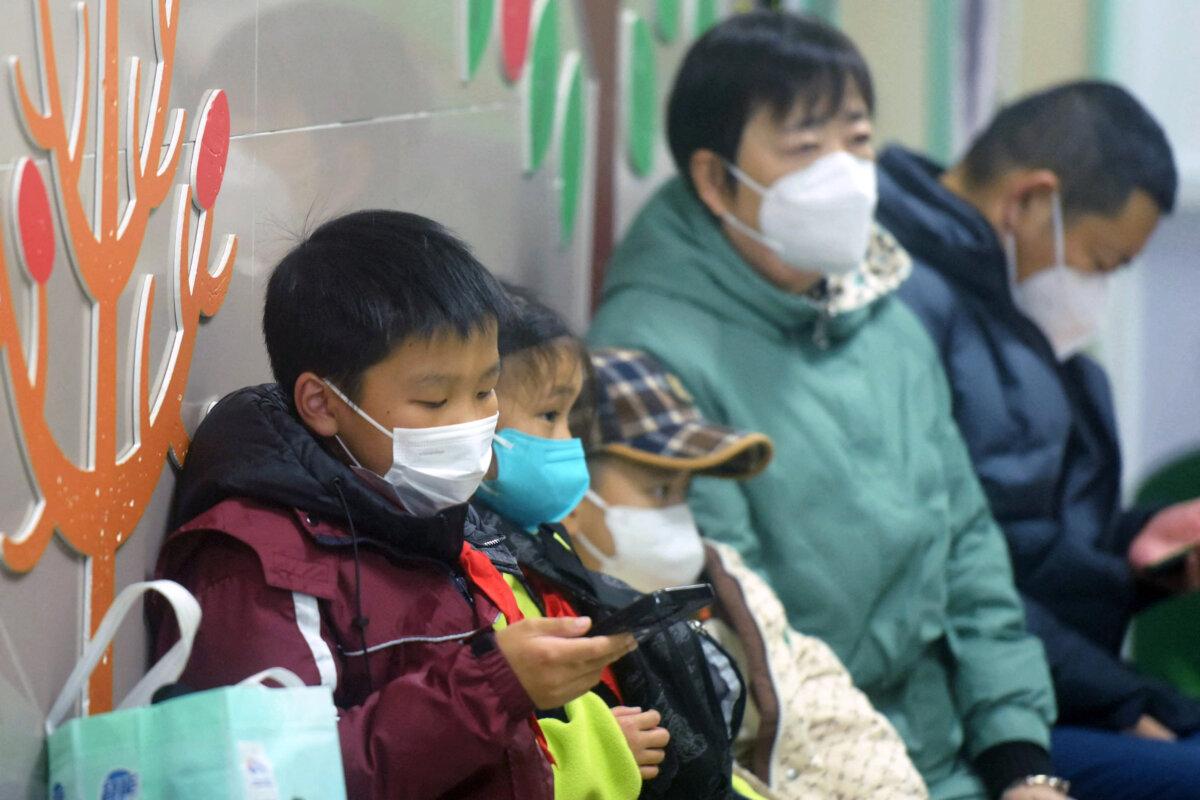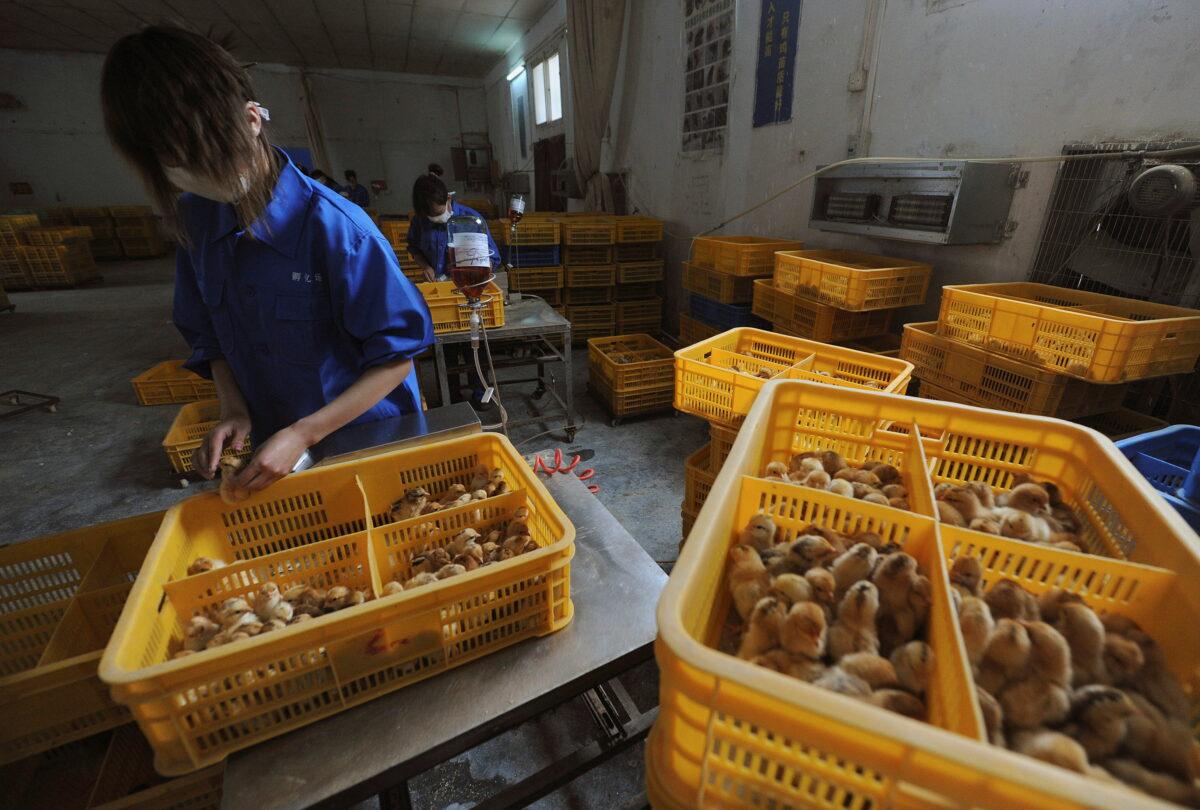China CDC Document Leak Confirms Enhanced Human Contagion of New H5N1 Strain
The document reports a new mutation in the hemagglutinin protein gene, lacking details and raising concern among experts.
An official internal notice from China’s National Center for Disease Control and Prevention (China CDC), issued in March and obtained by The Epoch Times, warns of increased human contagion risk due to a new mutant strain of H5N1 highly pathogenic avian influenza.
The internal document, titled “National Center for Disease Control and Prevention reports on the dynamics of H5N1 variants and analysis of response measures taken by primary and secondary schools in Beijing and Shanghai,” reveals that “as of 6:36 a.m. on March 13, 2025, the H5N1 variant (tentatively named A/H5N1-2025E) has a new mutation in the hemagglutinin (HA) protein gene.”
“Animal experiments have shown that its ability to bind to mammalian cells has increased, and the risk of human-to-human transmission has increased from low to medium,” the leaked document states.
The notice also discloses that as of March 12, a total of 127 samples nationwide tested positive for the mutant strain, “of which 68 percent were samples from live poultry market environments, and 25 percent were asymptomatic carriers among poultry workers.”
Sporadic cases were found to be concentrated in the densely populated breeding areas of the Yangtze River Delta and the Pearl River Delta.
Meanwhile, epidemic prevention departments in Beijing and other places have established avian influenza testing points or launched comprehensive avian influenza monitoring.
The notice indicates “first-level prevention and control targets” as those with direct contact with live poultry, individuals with weakened immunity, and patients with chronic respiratory diseases.
It wasn’t until early March that the Chinese regime acknowledged “sporadic” cases of human avian influenza infections occurring at a “relatively low level” in China. The specific virus strains and affected areas were not disclosed.
The internal notice highlights the serious nature of China’s avian influenza problem; however, Chinese Communist Party (CCP) officials continue to downplay it, as stated by Sean Lin, assistant professor in the Biomedical Science Department at Feitian College in New York and former U.S. army microbiologist, to The Epoch Times on April 5.
“A mutant strain has emerged, but officials have not provided specific details about the mutation,” he noted. “The name of the supposed A/H5N1-2025E virus strain does not correspond to a specific mutated amino acid position. The H5N1 HA hemagglutinin protein has around 524 amino acids in total, so the significance of ‘2025E’ is unclear,” he questioned regarding the mutation.
“This internal notice from the China CDC continues to obscure the truth,” he remarked, especially if they are emphasizing increased focus on this variant due to enhanced transmissibility.
Dr. Mei-Shang Ho, a research fellow at Academia Sinica in Taiwan, explained that before a virus can transmit from human-to-human, it undergoes “limited human-to-human transmission.”
“Limited transmission indicates that it is not yet very efficient,” she mentioned to The Epoch Times on April 6. “It may spread among close contacts as family members share similar genes.
“There is an urgent need to monitor this H5N1 now, and China must inform the public of any updates,” she cautioned. “If it spreads among humans, the consequences will be catastrophic.”
The World Health Organization has reported a historical mortality rate of around 50 percent for H5N1 in humans. Nonetheless, experts view this as an overestimation due to undiagnosed and unreported mild or asymptomatic cases.
“The United States’ advantage lies in its continuous monitoring. Once a case is identified, the public is promptly informed. This sets the U.S. apart from communist China,” Ho remarked. She added that existing antiviral and anti-influenza drugs continue to be effective treatments.
The Yangtze River Delta and Pearl River Delta in China, where the concentrated cases mentioned in the internal notice are found, serve as the nation’s commercial, industrial, and agricultural hubs.
Regarding the impact on Taiwan, situated off China’s southeast coast, Ho noted, “We do not heavily consume their agricultural products, but there is a considerable amount of illicit fish from Kinmen. Consumers who partake in these items are assuming risks. Our imports primarily consist of Chinese medicinal herbs and some vegetables, plant-based and relatively safe.”
Measures in Response to Outbreaks in Schools
The leaked document from the China CDC outlines response measures for bird flu outbreaks in primary and secondary schools in Beijing and Shanghai in preparation for potential H5N1 outbreaks among humans.
It specifies that all primary and secondary schools in five administrative districts of Beijing, including Chaoyang and Haidian, will switch to online teaching, while other districts may implement a hybrid policy.
In Shanghai’s Pudong New Area and Minhang District, the Municipal Education Bureau will concurrently provide access to an online classroom resource library covering all K–12 courses, as mentioned in the notice. It noted that “the three major cellphone carriers have committed to offering free data for educational apps during the outbreak.”

Masked children, accompanied by adults, wait to be seen by medical staff at the pediatric department of a hospital in Hangzhou, eastern China’s Zhejiang province, on Jan. 6, 2025. AFP via Getty Images
Lin confirms that the China CDC notice aligns with his prior analysis. He noted, “Certain schools in China abruptly declared a spring break for students, which wasn’t a regular school holiday.” Lin believes these actions signify undisclosed epidemic control measures. “The disease control department aims to contain the epidemic and remove students from schools,” he elaborated.
By not transparently informing parents and students about the reason for the break, the CCP jeopardizes potential H5N1 infections in the unaware and unguarded community.
Additionally, Lin pointed out that the China CDC notice did not categorize students as a high-risk group. “So, how did the avian influenza outbreak occur in the school environment? This remains unexplained to the public. Therefore, should control measures be implemented in other public gathering places?” he questioned.
Additional Prevention Strategies
Health authorities throughout China have ramped up monitoring of human bird flu infections.
Chinese media reported on March 21 that the regional CDC in Beijing’s Miyun District rolled out an avian influenza serological surveillance survey on March 10, establishing 10 monitoring points in various areas. The purpose of this testing was to “assess the status of avian influenza virus infection in the human population, effectively prevent epidemic spread, and ensure regional public health safety.”
However, mainland Chinese virus researchers have confirmed to The Epoch Times that human H5N1 infections have been documented in Miyun, Beijing, yet the general public remains uninformed.

Workers vaccinate chicks with the H9 bird flu vaccine at a farm in Changfeng county, Anhui province, China, on April 14, 2013. Stringer/Reuters
Chinese media reported a ceremony for launching the construction of a comprehensive avian influenza monitoring base in Laizhou, Yantai city of Shandong Province, on March 14. This monitoring base will serve high-risk areas like Laizhou farms and live poultry markets.
The official Chinese regime’s projects bidding website posted an announcement on April 3 for a project in Tianjin, near Beijing, titled “Tianjin Institute of Medical Science and Technology Information 2025 Influenza, Human Avian Influenza, and SARS Prevention and Control Project (Health Emergency Publicity Direction)—Competitive Consultation Announcement.” Only approved VIP members with access to the site can view the project details to bid on government contracts.
“China’s recent uncommon early warning and prevention measures for human avian influenza, while concealing the true reason from the public, poses a serious warning to the international community,” Lin emphasized regarding the recent moves by the Chinese regime.
Luo Ya contributed to this report.





